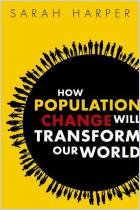加入 getAbstract 阅读摘要

加入 getAbstract 阅读摘要
Matthias Doepke, Anne Hannusch, Fabian Kindermann and Michèle Tertilt
The New Economics of Fertility
IMF, 2022
看看什么内容?
The historically negative relationship between national fertility rates and incomes is changing.
Recommendation
Fertility rates decline – so the thinking once went – as incomes rise: Women who enter the workforce tend to have fewer children, as do families in wealthy countries. But the scenario today is different. This intriguing research study by economists Matthias Doepke, Anne Hannusch, Fabian Kindermann and Michèle Tertilt notes that fertility levels are increasing as gender roles converge, support programs proliferate and social taboos lessen. This demographic shift also carries important social policy implications for economic development around the world.
Summary
About the Authors
Matthias Doepke is a professor of economics at Northwestern University. Michele Tertilt is a professor of economics at the University of Mannheim, where Anne Hannusch is an assistant professor. Fabian Kindermann is a professor of economics at the University of Regensburg.



















Comment on this summary